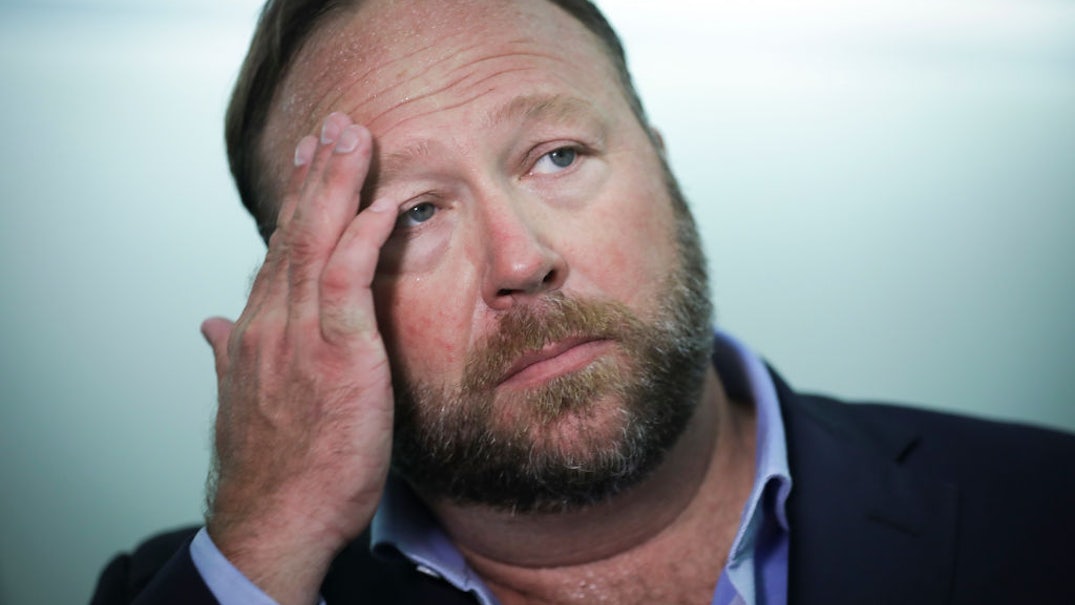Few people embody the far-right internet fringe more than Alex Jones, the conspiracy theorist and Infowars founder who for years spread the baseless lie that the 2012 Sandy Hook massacre was a hoax.
Last week, in a step towards accountability, a jury in Texas ordered Jones to pay nearly $50 million in combined damages to the parents of a child who was murdered at Sandy Hook.
The jury awarded Scarlett Lewis and Neil Heslin, the parents of Jesse Lewis, a 6-year-old who was murdered in Newton, $4.1 million in “compensatory damages,” which are intended to compensate the parents for the loss or injury inflicted on them by Jones. A day later, the jury awarded them $45.2 million in “punitive damages,” which are intended to punish Jones for his behavior.
Even during an otherwise-busy news week, the significance of the Jones case did not escape our listeners. The Insider inbox received dozens of questions about the nature of civil lawsuits and whether Jones will actually end up having to pay the money.
The broader lesson of the Jones case was summed up crisply in an email from a listener: “[The Jones story] got relatively little press coverage and disappeared with the end of the 24-hour news cycle. The press should produce much more robust coverage of how the judicial process works to hold fraudsters, libelers and other criminals to account. The purveyors of lies get so much more attention and financial reward than the purveyors of truth and…the financial incentive structure allowing this to happen is a grave threat to our democracy.”
That observation picks up on perhaps one of the more stunning revelations of Jones’ trial: the sheer profitability of his operation. An independent economic consultant told the jury that the estimated net worth of Jones and his company was between $135 million and $270 million. And a lawyer for the plaintiffs shared evidence suggesting that Jones had made more than $800,000 a day for a period in 2018.
Last week’s trial — and the eventual award of monetary damages — was just the latest development in a long legal saga involving Jones. Over the course of four years of litigation in both Texas and Connecticut, the families of 10 Sandy Hook victims sued Jones for defamation in four separate lawsuits. Jones was found liable by default in each case after refusing court orders to turn over documents.
The Texas jury’s task, then, was not to decide whether Jones’ actions were defamatory but rather to determine how much money he owed his victims. The proceedings took an unexpected turn last Wednesday when a lawyer for the plaintiffs revealed that Jones’ lawyer had accidentally sent him two years of Jones’ personal text messages. The texts appeared to contradict statements that Jones had made under oath, spurring speculation about a potential perjury charge.
Aside from the spectacle of Jones being made to squirm as he learned of his lawyers’ mistake, the case raised a number of questions about whether and how the justice system holds public figures accountable. What happens to Jones now that he’s been found liable and ordered to pay large sums of money? Can he still find a way to get out of paying?
The answer, in short, is yes. The state of Texas, in a law that Joe Patrice of Above the Law calls “the ultimate jury nullification,” caps punitive damages awards at $750,000. The state’s civil code reads, in relevant parts: “[Punitive] damages awarded against a defendant may not exceed an amount equal to the greater of: an amount equal to any noneconomic damages found by the jury, not to exceed $750,000.” (The damages awarded to Jones’ victims are “non-economic” because they’re not “intended to compensate a claimant for actual economic or pecuniary loss” — rather they relate to the “mental and emotional pain or anguish” experienced by the parents.)
As outlined in a helpful explainer by Greg Doucette, a First Amendment trial attorney writing in The Bulwark, Jones’ lawyer has said publicly that the damages cap is per-plaintiff, meaning that Jones would owe the two plaintiffs $1.5 million. The lawyer for the parents, Lewis and Heslin, has said that the cap is both per-plaintiff and per-claim, bumping up the amount that Jones owes to $4.5 million. Those details will be worked out by the trial judge, but one thing is for sure: both of those numbers are a far cry from $45.2 million.
However, Jones’ legal problems are far from over. His company is in court after declaring bankruptcy. He faces a more significant case in Connecticut, where multiple families have won a default defamation case against him. And there will be another trial in Texas.
Let us know what you think. Write to us at letters@cafe.com.




























